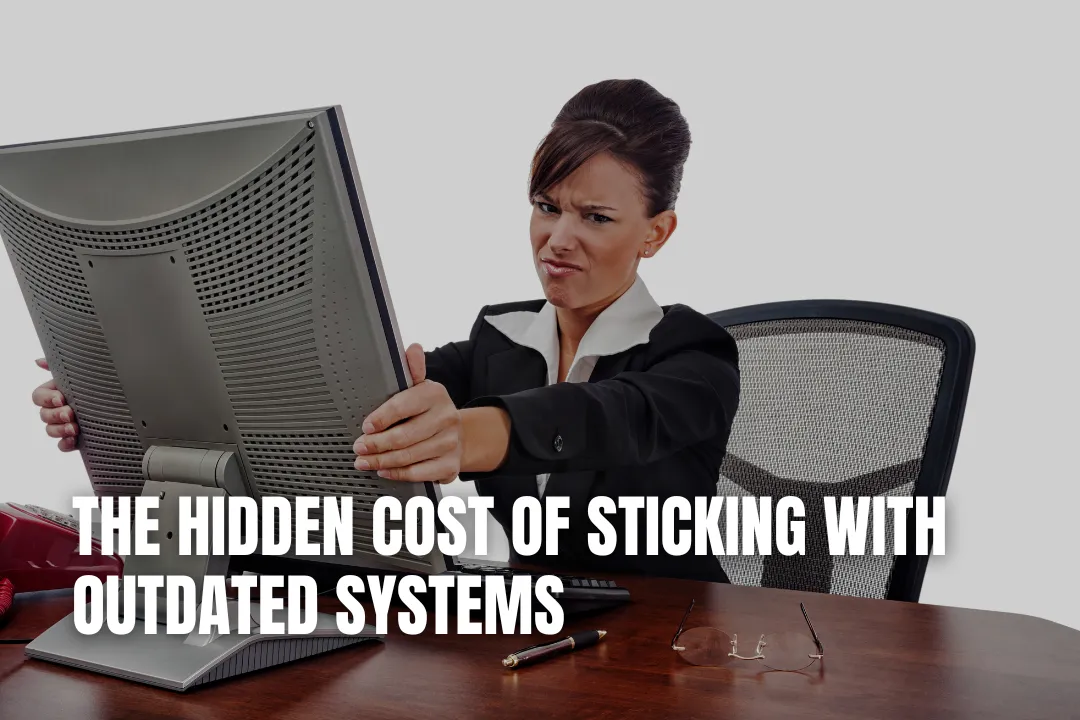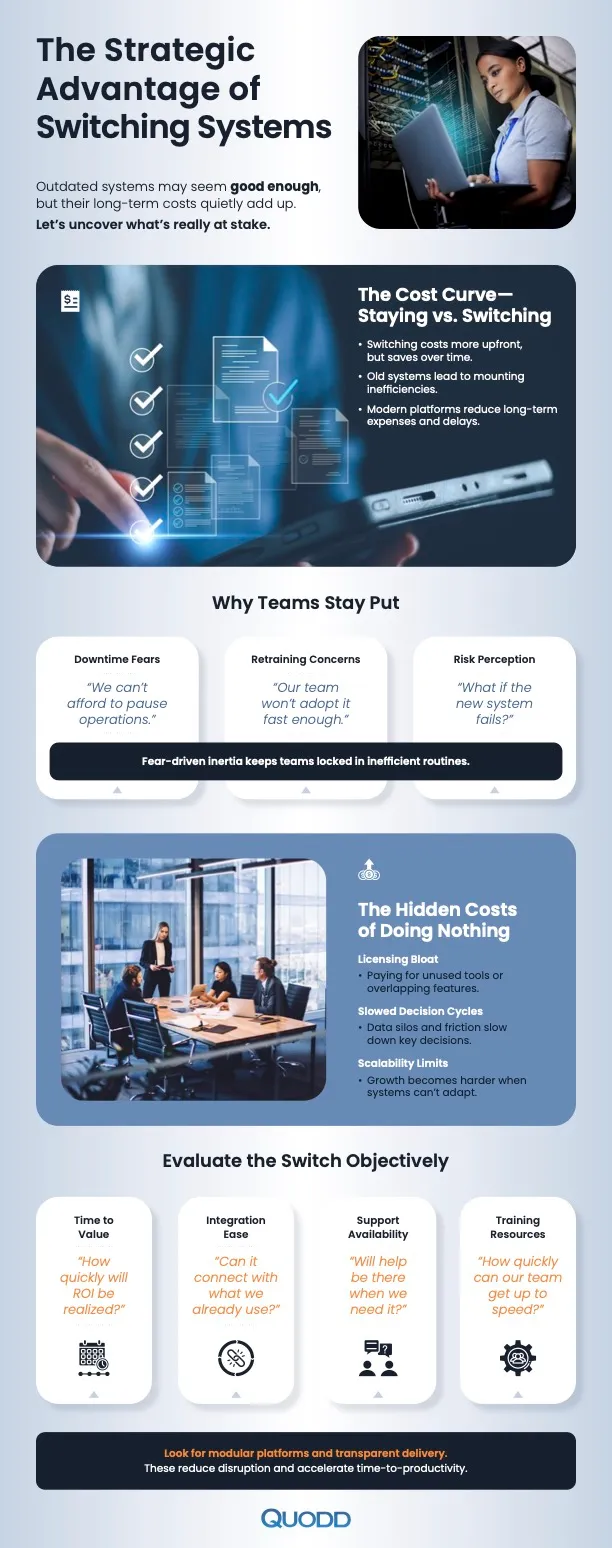The Hidden Cost Of Sticking With Outdated Systems
August 14, 2025

Companies often hesitate to switch systems, especially when current processes seem familiar or functional. Yet, the real expenses of maintaining outdated technology frequently go unnoticed. The hidden costs that accumulate over time can significantly impact productivity, security, and overall business growth.
Key Takeaways on Outdated Systems
- Reduced Efficiency: Older systems often require manual data entry and lack automation, which slows down workflows, increases the likelihood of errors, and lowers overall productivity.
- Security and Compliance Risks: Outdated technology frequently lacks modern security patches, exposing your business to cyberattacks and data breaches, which can lead to significant financial and reputational damage.
- Limited Growth Potential: Legacy systems can't easily scale or integrate with new technologies, preventing your business from innovating and keeping pace with competitors in the market.
- High Maintenance Costs: Supporting obsolete software becomes increasingly expensive over time, as it may require specialised IT knowledge and custom fixes that drain your budget.
- Long-Term Value of Upgrading: Although there are initial costs to switching, the long-term benefits of improved efficiency, security, and scalability make upgrading a crucial investment for future success.
Register Your LLC
Company Registration
START NOW
Reduced Efficiency and Productivity
Older systems typically lack the automation and integration capabilities that modern platforms offer. Tasks requiring manual input, duplicate data entry, and cross-checking consume valuable employee time. These inefficiencies slow workflows and increase the chance of human error. For example, teams using separate spreadsheets and outdated software may spend hours reconciling information that newer systems would automatically consolidate.
The resulting delays affect project timelines and customer satisfaction. Employees may become frustrated with cumbersome tools, leading to decreased engagement and higher turnover rates. The cost of lost productivity often outweighs the short-term savings from avoiding system upgrades.
Security Vulnerabilities and Compliance Risks
Security master data is critical for protecting sensitive information and maintaining regulatory compliance. Outdated systems often lack current security patches and features, leaving companies vulnerable to cyberattacks and data breaches. Without proper encryption or access controls, sensitive customer or employee data can be exposed.
Regulatory bodies increasingly require organizations to demonstrate compliance with data protection laws. Failing to upgrade systems can result in hefty fines, legal consequences, and damage to a company’s reputation. The cost of remediation after a breach typically far exceeds the investment needed to implement secure, modern solutions.
Limited Scalability and Innovation
Businesses that cling to legacy systems may struggle to scale operations or adopt new technologies. Modern solutions offer flexibility that supports growth, such as cloud storage, real-time analytics, and mobile access. Without these features, companies risk falling behind competitors who leverage advanced tools to respond quickly to market changes.
Innovation can stall when employees are forced to work around system limitations. Lack of integration between platforms restricts data flow and hampers decision-making. Staying with outdated technology can lead to missed opportunities for improving customer experiences and expanding service offerings.
Higher Maintenance and Support Costs
Older systems often require more maintenance and specialized IT support. As software becomes obsolete, vendors may discontinue updates or end technical support. This situation forces businesses to rely on costly custom fixes or maintain dedicated staff to manage outdated platforms. These ongoing expenses add up over time and can strain IT budgets.
Conversely, modern systems typically come with vendor support, regular updates, and scalability options that reduce the burden on internal teams. Transitioning to updated platforms can free up resources for strategic initiatives rather than routine troubleshooting.
Balancing Transition Costs with Long-Term Benefits
Switching systems involves upfront investment, training, and potential workflow adjustments. However, the hidden costs of staying with outdated technology often grow larger and harder to manage. Evaluating these expenses against the benefits of improved efficiency, enhanced security, and increased scalability can reveal the true value of an upgrade.
Businesses that proactively adopt modern systems position themselves for sustained success. The cost of delay is rarely worth the short-term comfort of maintaining the status quo. For more information, look over the accompanying infographic.


